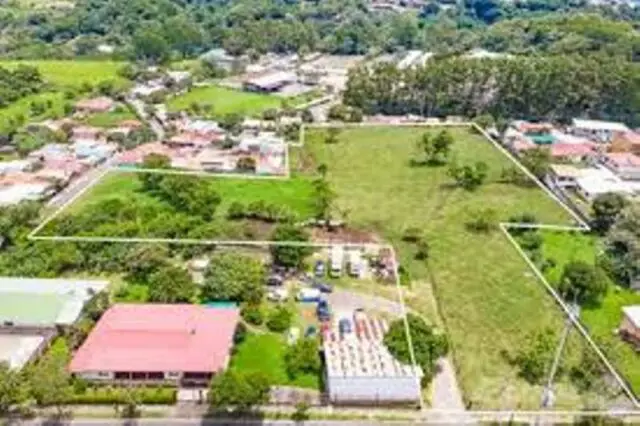Seeing the change that this district of the canton of Belén has experienced is dizzying. This nice and cute place before the 60’s was very different from what we see today. It was simply a coffee plantation with houses on both sides of the dirt, grass and loose stone streets.
The main product was coffee. However, many products were grown and sold in the central market of San José. The tomatoes that began to be exported to Panama were famous, in addition to the large production of beans, sweet peppers, sweet potatoes, peanuts, and the production on small plots of other typical garden foods such as radishes, cabbage, and lettuce. Even some sugarcane fields could be seen there. Pastures where we found horses, cows and oxen that were the ones that pulled the carts to take the coffee to the “beneficios”.
I said before that many streets were made of grass; Several animals grazed there as long as the police did not see them because they take them to the “bottom”, a place that the Municipality had, to keep the animals prisoner while their owners arrived to pay the fine of three pesos to free them.

Many of the current streets did not exist. Walking “inside” was an established custom. To go to school, to the river or to Ojo de Agua, we would go through other people’s properties, jumping fences to shorten the path. The owners already knew who we were and gave us permission to cross. Going on that big lap was a waste of time.
Where the Marriot Hotel, the Intel company, the Spanish Country Club, the urbanizations and the office building complexes are now located were coffee farms.
Who collected the coffee?
At that time there were no foreign workers. Well, all the youth participated in the “cogida”. We were not forced to go. It was established custom. Sometimes vacations were brought forward so that the golden grain would not be lost. Yes, it was the kids who had to help the older ones to do their labor. I remember seeing Pepe Rodríguez with his more than 20 offspring go out to collect the coffee from his farm and when they finished theirs they helped the neighboring farms.¢1.50 was paid per trunk collected, which was paid on Saturday by presenting the “tickets”.
Polo and Chinín, behind the hermitage of La Ribera
The football square, located between the Hermitage and the School, was the meeting place every afternoon. Those wonderful “mejengas” could not be missed. Workers and students met around three in the afternoon, to enjoy those games of those from above against those from below and that were the seedbed of one of the best teams, “Deportivo Ivo Arias”, which , along with other teams such as “Las Cruzadas de Calle Blancos”, “Tigres de Cartago” and “Belén Junior”, were the best.
The approach of the teams was still 3,2,5 which was perfectly mastered: Canal or Joaquín in goal, Minino, Hugo or Chinín and Edgar, Yeye and Luisiardo (they still didn’t call me Polo), and ahead we had Miro, Calillo, Franco, Poli, Ñato, Don Ivo, Fidel, Rodolfo, Coco, Piñero and Oscar Ramírez. Yes, Oscar, the father of the excellent 10 in the League, Saprissa and La Sele, who, without being our neighbor, was incorporated into the team for reasons of love (right Ana?).
By the way, in 1964 we premiered a nice uniform that Calixto Chaves sent us, who had emigrated to the United States to work as an aviation mechanic. After the mejenga we would go and listen to the music of Julio Jaramillo, Daniel Santos and the soap opera Los Tres Villalobos in Javier Chaves’ (Yeye) grocery store.
We did not have electricity, drinking water was terrible, the new pipe had not yet been installed. We studied with candles or “Coleman” lamps. The notebooks ended the year full of candle wax. That’s where the saying of burning the eyelashes was born. We had very few health services as we know them now. We used a hollow toilet, which was known as a latrine, covered by zinc walls and a roof that formed a true “Turkish bath”.
I hope that this change towards the future that has been given to this charming town has been of well-being for its inhabitants. I hope that the Municipality takes advantage of the money that arrives to continue growing.

